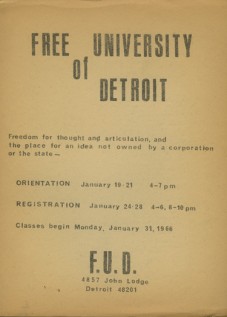Helmut Newton’s Eros by George Tysh
Deep cuts
Helmut Newton’s first book shattered Eros into many sharp pieces.
BY GEORGE TYSH
White women should wonder about the photographs of Helmut Newton — as should all women and men. Who are these figures populating worlds of opulence and isolation who seem to have everything — mansions, swimming pools, great bodies, sexy clothes and toys (human or otherwise) — that glossy magazines dangle like exotic treasures beyond our reach?
Newton’s 1976 collection, White Women (reprinted elegantly this fall by Thunder’s Mouth Press) shoved viewers under the wheels of an oncoming subway train named desire — the media-driven Consumer-Fetish Express — without seemingly intending to. Though it was his first book, Newton had already made his scandalous reputation as a fashion photographer for various European editions of Vogue, and his subjects were media darlings, artists and aristocrats who set the standard when it came to coveting one’s neighbor’s goods (or spouse).
In these fantasy shots of the anonymous rich and narcissistic famous, erotic clues overwhelm the frame. Like gigantic billboards in a tiny landscape, like huge neon fingers pointing “look here,” the signs of desire in each of Newton’s photographs are impossible to miss. But after the initial surprise wears off, we’re left with a kind of void and more questions:
Do the perfect legs of the woman on the yacht distract us from the impossible projection of her torpedo breasts? Mistress of all she surveys, she is surveyed herself, on display for the tourists passing in a (mere) motorboat. It’s not obvious whose pleasure is depicted here, her solitary satisfaction or ours. Aren’t we just tourists too — or since we’re on deck with her, are we more intimate? Newton gives us a kind of answer on the book’s next page, which shows the same woman below deck, her shirt lifted to expose even more plastic-looking breasts with theatrically phony nipples. The spectacle, despite her beauty and affluence, might be an empty one after all.
Though White Women depicts the glamour of the well-to-do, it finds most of its subjects in a world of solitude. The series of eight photographs of a certain “Roselyn in a chateau” begins with the lady of the house as a partially clothed nude ascending a staircase. There’s no way to tell if she’s on her way to a rendezvous or just wandering — until we turn the page and see that in each of the shots, no matter how nude or revealing, she seems to be waiting while gazing into the distance, alone.
Newton’s “Portrait of Elsa Peretti as a bunny on the terrace of her New York apartment … November 1975” sets up a one-frame fictional drama that narrates itself, more and more, the closer we look. At first glance, we know she’s beautiful, idealized, the almost mythical bunny of Everyman’s dreams — and wealthy too, since this is no ordinary Manhattan apartment. But she poses self-consciously, like the quintessential working model, and seems to be resting. Is there a party or a fashion shoot going on? Is she satiated or just weary?
Wherever we look in this groundbreaking collection, there’s a formality to the pleasures being given and taken, a coldness to the heat, as if the bodies were made of dry ice. And love is a ghost that haunts these scenes as a kind of dearly departed.
Many would simply call the activities depicted in White Women perverse: the perfectly made-up model pushing a bright-red raw steak against one side of her face (caption: “A cure for the black eye. Paris, 1974”); two gaunt women occupying a stall in the powder room of an exclusive Parisian club — naked except for garter belts, stockings and heels, one forcing the other’s head into a commode; or the series of faux murder scenes (e.g. the MT cover shot this issue) in which dangerous damsels get the better of one wealthy asshole or another.
But Newton doesn’t waste his time or ours. No innocent postcards here. Each page of White Women is an adventure in the high-priced skin trade and a devastating vision of (self-) love among the upper classes. It’s one hell of a seminal classic.
Source: Published Metro Times 12/20/2000
Tags: Essays, George Tysh, Helmet Newton, Reviews






